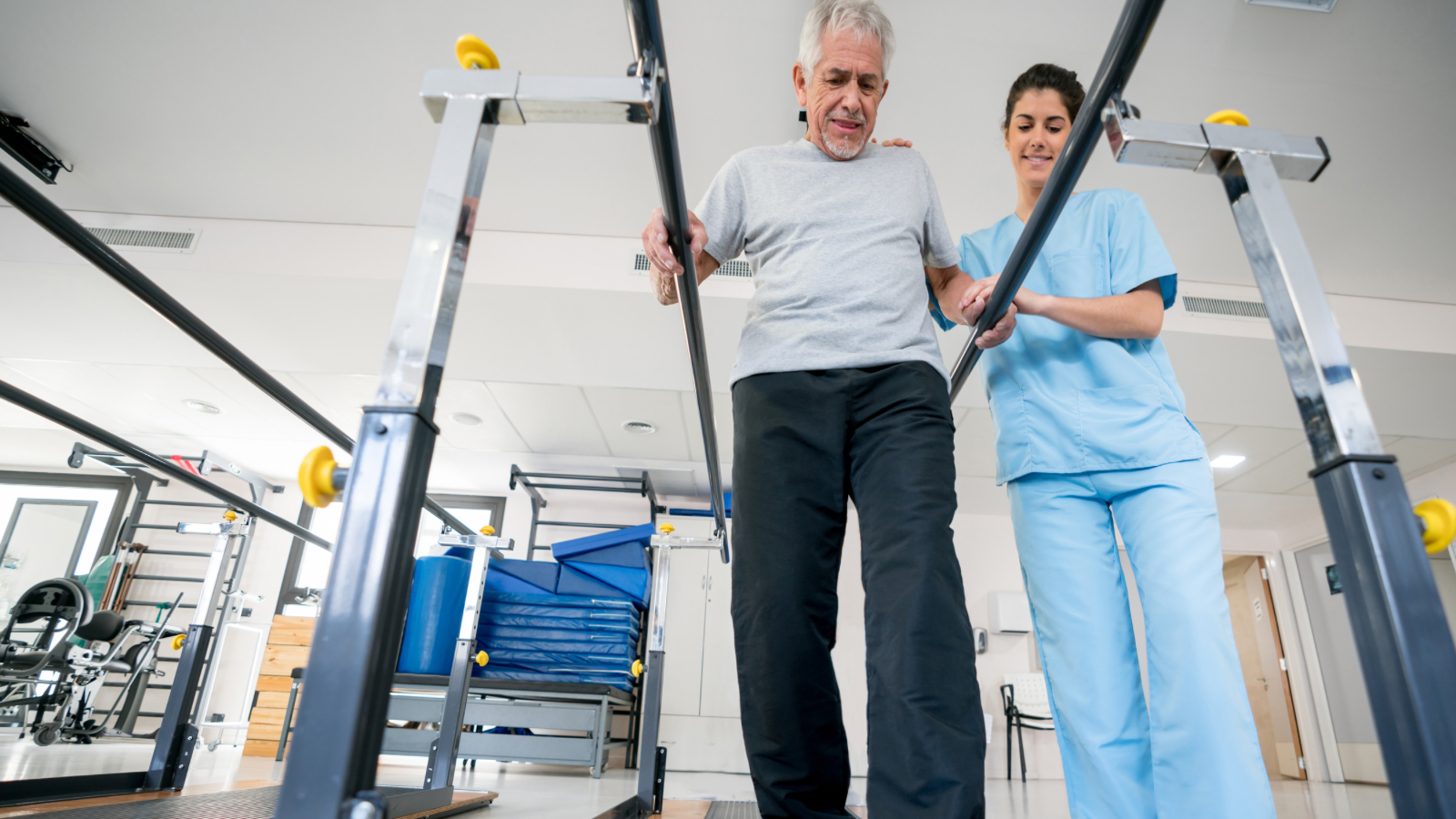Stroke is a serious medical condition that occurs when the blood supply to a part of the brain is interrupted, causing brain cells to die1,2. Stroke can cause a variety of symptoms like weakness, paralysis, speech difficulties, memory loss, cognitive problems, and emotional changes1,2.
Physical therapy is an important part of recovery from a stroke that aims to help stroke survivors regain their functional mobility and independence. Physical therapy helps stroke survivors stimulate damaged nerves and muscles, promote circulation to affected areas of the brain to promote healing, learn to move and use their affected body parts as much as possible, regain mobility and strength, as well as to prevent or reduce complications such as muscle stiffness, spasticity, pain and falls1,2,3,4.
PHYSICAL THERAPY AFTER STROKE
Physical therapy usually begins as soon as possible after the stroke, ideally within two days3,4,5,6. The duration and intensity of physical therapy depend on the severity and type of stroke, the medical status of the patient, as well as the individual’s goals and needs.
Stroke recovery does not just involve a physical therapist. It takes a team of professionals, including a physiatrist (a physician who specializes in rehabilitation), a neurologist (a physician who specializes in brain and nervous system disorders), nurses, an occupational therapist, a speech-language pathologist, a dietician, a social worker, a neuropsychologist, and a case manager4,5.
The physical therapist will assess strength, balance, coordination, range of motion, sensation, pain, and functional abilities1. Based on the assessment and the individual’s goals, the physical therapist will design a personalized treatment plan that may include interventions like:
- Exercises to improve muscle strength, endurance, and flexibility1,3,4,7
- Activities to improve balance, posture, gait, and mobility1,2,3,4,5,6,7
- Training to use assistive devices such as walkers, canes, or wheelchairs1,3
- Education on how to prevent falls and injuries
- Manual therapy to relieve pain and spasm
- Electrical stimulation to activate muscles and nerves2,4,7
- Biofeedback to enhance awareness and control of muscle activity2,7
- Hydrotherapy utilizes water resistance and buoyancy for exercise2,7
- Constraint-induced movement therapy encourages the use of the affected limb by restricting the unaffected one2,4,7
- Mirror therapy uses visual feedback to stimulate the movement of the affected limb7
Physical therapy after a stroke can take place in different settings and usually starts in a hospital4,5. The patient may then move through a subacute care unit and/or an inpatient rehabilitation unit before being discharged home4,5,6. The person will then usually receive home health therapy or continue treatment in an outpatient clinic depending on their level of function and needs4,5,6. The physical therapist will work closely with the stroke survivor and their family to determine the best path for their rehabilitation and to ensure continuity of care.
THE BENEFITS OF PHYSICAL THERAPY AFTER STROKE
- Physical therapy has lots of benefits for stroke survivors, such as:
- Improving functional mobility and independence1
- Enhancing quality of life and well-being
- Reducing disability and dependence on others
- Increasing self-confidence and motivation
- Preventing or minimizing complications such as contractures, pressure sores, or infections7
- Reducing the risk of recurrent stroke or other cardiovascular events
Physical therapy after a stroke can also have positive effects on the brain itself. Research has shown that physical activity can stimulate the growth of new brain cells3, the formation of new connections between brain cells, and the growth of new blood vessels in the brain. These physiological processes can help with healing and recovery after a stroke.
Physical therapy after a stroke is not a one-size-fits-all approach. It requires individualized assessment, planning, and evaluation. It also requires active participation and collaboration from stroke survivor, their family, and their caregivers. Stroke recovery is a long-term process that requires patience, perseverance, and dedication.
However, physical therapy can be rewarding and empowering for stroke survivors. It can help them regain their functional mobility and independence, improve their quality of life and well-being, prevent, or reduce complications and make the most of their recovery. If you or a loved one is looking for physical therapy services that come to you, contact us for a free consultation!
References
1Home PT After Stroke: What to Expect. Verywell Health. https://www.verywellhealth.com/home-physical-therapy-after-stroke-4587362
2Guide | Physical Therapy Guide to Stroke. Choose PT. Published August 26, 2021. https://www.choosept.com/guide/physical-therapy-guide-stroke
3Stroke Association. Physiotherapy after a stroke. Stroke Association. Published September 3, 2019. https://www.stroke.org.uk/what-is-stroke/physiotherapy-after-stroke
4Mayo Clinic Staff. Stroke rehabilitation: What to expect as you recover. Mayo Clinic. Published 2017. https://www.mayoclinic.org/diseases-conditions/stroke/in-depth/stroke-rehabilitation/art-20045172
5American stroke association. Rehab Therapy After a Stroke. www.stroke.org. Published 2019. https://www.stroke.org/en/life-after-stroke/stroke-rehab/rehab-therapy-after-a-stroke
6Hoffman H. A Simplified Guide To Physical Therapy for Stroke Patients. Saebo. https://www.saebo.com/blog/a-simplified-guide-to-physical-therapy-for-strokes/. Published September 9, 2016.
7Physiopedia. Stroke: Physiotherapy Treatment Approaches. Physiopedia. Published 2014. https://www.physio-pedia.com/Stroke:_Physiotherapy_Treatment_Approaches
What makes us different? Our care comes to you!
View Our Service AreaWe Are A Comprehensive Mobile Company Focused on Wellness, Fitness, Rehabilitation, and Prevention
We specialize in transforming the lives of seniors, adults and teenagers with a wide array of diagnoses and conditions in their home or location of choice. You deserve to be your best self through good health and wellness. We would love to have the privilege to work with you or a loved one.
Request a FREE Consultation Today!
